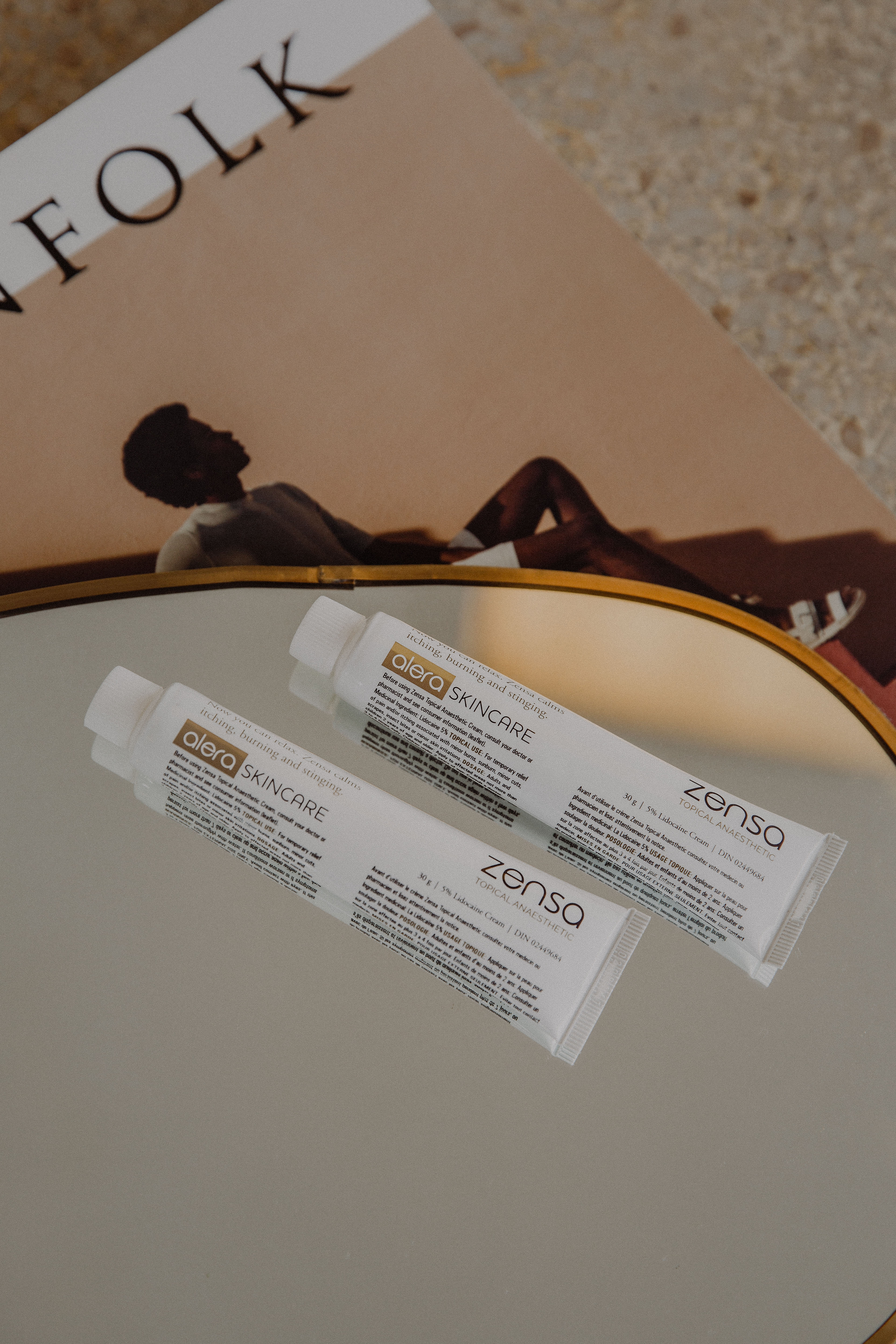8 Things You Should Expect Before & After Micro-Needling
8 Things You Should Expect Before & After Micro-Needling
Your skin is wiser than you think. Thanks to microneedling, resiliency can build with age while regenerating a youthful glow. And it all starts with a quick dermatology lesson on your body’s age-reversing protein. Collagen is the protein responsible for your skin’s structure, strength and elasticity, which gives it a smooth, supple texture. After age 20, we produce approximately 1% less collagen every year. This process thins the skin and often leads to wrinkles over time.
Microneedling (also known as collagen induction therapy) is a popular facial care treatment that rejuvenates this system and naturally promotes collagen production. This practice uses a dermaroller with several tiny needles attached to its head, which gently prick the top layer of your skin. Microneedling creates minor tears and stimulates the skin to repair itself. Like a muscle, this regenerative system increases protein production and strengthens the skin through the healing process.
At-home devices provide a gentle D.I.Y. option to try out this practice. However, professional microneedling treatments use dermarollers with longer needles for a more penetrative treatment and noticeable skin benefits.
Due to the procedure’s nature, proper microneedling preparation and aftercare can make all of the difference to protect and allow your skin to reap optimal long-term effects. We are here to guide you through the entire process and share what to expect at every stage of your microneedling journey.
How To Prepare For Microneedling
Remember that this is not an ordinary facial and some of your medical history is vital to take into account before booking a session. From medication-related grace periods to your regular beauty routines, there are several products you might need to abstain from using in the weeks (or months) leading up to your microneedling appointment. For those eligible, it is important to switch out any habits to keep your skin as calm as possible before pricking into your pores.
Take Inventory of Your Medications
This step is incredibly important and can easily be overlooked amid your excitement to book a treatment. For those with acne-prone skin, note that Accutane, similar isotretinoin-based oral medications and topical retinoids, should be avoided six months before microneedling. The reason for this precaution is two-fold. These pharmaceuticals are fairly intense drugs that can heighten your skin’s sensitivity and make it more vulnerable to irritation. Most individuals also are on these medicines to treat active acne and leaves the skin more susceptible to bacterial infection.
Blood-thinning medications, such as Aspirin, ibuprofen and other nonsteroidal anti-inflammatory drugs (NSAIDs) or nutritional supplements, including Fish Oil, vegetarian Omega-3, Vitamin E, turmeric, ginger or garlic tablets, should not be taken within 72 hours both before and after the procedure. These products can prevent your blood from clotting, which may hinder your skin’s ability to heal during the recovery process.
If you’re prone to cold sores, you should take an anti-viral prescription for the 48 hours before and the day of your treatment to prevent any flare-ups. Speak with your medical aesthetician or general doctor for more information on your personalized needs.

Modify Your Skincare Routine
In the several days leading up to your appointment, treat your skin like it’s already incredibly sensitive. In practice, these guidelines include limiting your exposure to harsh chemicals and UV rays. You will want to refrain from using abrasive skincare products, such as retinol, exfoliants, topical antibiotics and acids, for at least 48 hours before microneedling.
It is crucial to avoid harmful UV ray exposure from direct sunlight and tanning beds for the five days before your treatment.
Rethink Your Other Beauty Treatments
Be mindful of your hair removal practices before microneedling. Refrain from treatments such as electrolysis, lasering, waxing or using hair removal creams for at least two weeks before your appointment. It should be fine to shave any body hair in the few days before the procedure. However, it is best to leave a 24-48 hour grace period before your booked session to prevent any skin irritation.
Cosmetic procedures, such as botox, other laser beauty treatments and chemicals, should be avoided for two weeks before microneedling. These procedures temporarily make the skin more sensitive and more prone to irritation. This time frame provides your skin adequate time to recover between treatments. You should wait four weeks after getting any filler injections before scheduling an appointment to allow these solutions to properly settle into the skin.
Integrate Supportive Diet & Lifestyle Habits
A healthy diet and lifestyle plan support every aspect of your long-term health, and as your body’s largest organ, your skin is no exception. Maintaining these wellness habits will significantly aid in the healing process and optimize collagen production. You should not consume any alcohol within 24 hours before and refrain from having any caffeinated foods or drinks the day of your microneedling procedure. These substances can promote bruising and inflammation, which can harm or hinder the healing process. Intense exercise also should be avoided in the 24-48 period before your appointment.
Limit processed ingredients and integrate more whole foods, especially vitamin C-rich produce, into your diet in the days leading up to the skin needling to aid the recovery process. Drinking adequate water also will support your system and help reduce inflammation.
Your Skin Will Be Primed, Whether You’re Prepared (or Not)
On the day of your appointment, make sure to keep your skin clean, dry and makeup-free. Using a gentle cleanser and moisturizer will keep the area calm and ensure no germs or dirt will infiltrate the skin. If you skip this step, your dermatologist or medical aesthetician will wash and dry your face for you.
Afterward, the professional performing the procedure will apply a very thick layer of numbing cream, like Zensa Numbing Cream, to ensure that you don’t feel (most of) the pain from the needles penetrating your skin’s surface. The cream will be left on your skin for at least 30 minutes before your microneedling session begins. Your technician will wipe it away in sections to support maximum numbing throughout the treatment.

Microneedling Aftercare
Like with tattoos, proper aftercare makes all of the difference for your microneedling results. Follow your dermatologist’s or medical aesthetician’s guidelines carefully to prevent skin infections during the wound-healing process.

Pampering Your Post-Pricked Skin
Your skin will likely be red, a bit sore, dry and even a little raw immediately following the microneedling procedure. Expect it to be hypersensitive to any bacteria, abrasive regimens and sun exposure for the next one to two weeks. Regular cleansing, hydration and proper sun protection will support your skin in this ultra-attuned state. Listen to your desire to repeatedly re-apply your moisturizer (sunscreen is a non-negotiable, too) regularly throughout the day. Using antioxidant-rich products will further aid the healing and collagen production process for a more radiant result.
Make sure to drink plenty of water to keep your skin and system hydrated, too.
What To Avoid After Microneedling
Your skin is the most vulnerable for the first 48-72 hours after the procedure. Any skincare or lifestyle routines that introduce harsh chemicals or potential germs need to be avoided to prevent the area from getting irritated, infected or inflamed. Keep in mind that any peeling, dryness and even a few breakouts are normal parts of the process if you experience these side effects.
Refrain from wearing makeup for at least 24 hours (the more days you can spend bare-faced, the better) and avoid sweat-inducing exercise and direct sunlight exposure for three days after microneedling.
You also will want to stay clear of using any exfoliating skin tools (for one week) or undergoing any cosmetic practices (for at least two weeks) during the healing process.
Caffeine, alcohol and processed foods dehydrate your skin and can slow your body’s healing process. Limiting these items in your everyday life will only further improve and enhance your final results.

Glowing Results
After following these guidelines to a T, the most important question remains: When will you see the final results? Like with most skin treatments, there is both a definitive and a deeply personal answer, depending on your needs and expectations.
You should start seeing a noticeable improvement in your skin’s texture and overall brightness within a week. In this timeframe, all of the redness should have calmed. For some, small breakouts might persist at this stage. Over the next three to four weeks, your collagen production should accelerate for a more poreless and glowy appearance.
One to three treatments over several months should be enough for those seeking to resolve early signs of aging (or give skin a pick-me-up) to achieve your desired results. For skin conditions such as scarring, stretch marks and skin sagging, you may need anywhere from three to six treatments to see optimal improvement.
Long Term Outlook & Maintenance
Microneedling can be safely done every four to six weeks in between sessions. Over time, your skin will inevitably change. Fortunately, this treatment targets various skin concerns, from uneven skin tone and fine lines to acne, tattoo removal and more.
As a non-invasive treatment, most individuals can book refresher sessions throughout the years without any risk. While this now common practice can seem to be all about aesthetics, it should also be viewed as a self-care practice to empower you to embrace the skin you’re in.
